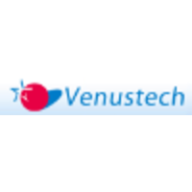


Check Point Quantum Force NGFW and Venusense Unified Threat Management are competing in cybersecurity. Check Point Quantum Force NGFW is favored in pricing and support, while Venusense provides significant value with more features.
Features: Check Point Quantum Force NGFW offers advanced threat prevention capabilities, seamless cloud integration, and superior intrusion detection and prevention systems. Venusense Unified Threat Management provides an all-in-one solution with web filtering, VPN, and application control, offering broader protection for businesses.
Ease of Deployment and Customer Service: Check Point Quantum Force NGFW is known for straightforward deployment and swift customer service, enhancing efficiency. Venusense's modular deployment approach allows scalability, while both provide effective problem resolution tailored to requirements.
Pricing and ROI: Check Point Quantum Force NGFW offers competitive setup costs with strong ROI from its security features. Venusense Unified Threat Management may have higher initial costs, but its extensive features and adaptability provide an appealing ROI for comprehensive security needs.


Fortinet FortiGate offers comprehensive network security and firewall protection across multiple locations. It effectively manages data traffic and secures environments with features like VPN, intrusion prevention, and UTM controls.
Organizations rely on Fortinet FortiGate for its robust integration with advanced security policies, ensuring significant protection for enterprises, cloud environments, and educational sectors. It facilitates network segmentation, application-level security, and authentication management, securing communication within and between locations such as branches and data centers. Its efficient SD-WAN and UTM features enable streamlined data management and enhanced threat protection capabilities. Users appreciate its centralized management, facilitating seamless operations across diverse environments.
What are the key features of Fortinet FortiGate?
What benefits should users expect from Fortinet FortiGate?
Fortinet FortiGate is crucial in sectors like education, offering robust networks for secure data flow between campuses and facilitating remote learning. In enterprise environments, it allows efficient management of application traffic and security across multiple branches, while in the cloud, it seamlessly integrates with diverse platforms to enhance security infrastructure.
Check Point Quantum Force NGFW provides centralized management with scalable security for network perimeters. As a reliable firewall, it ensures advanced threat prevention and offers seamless integration, making it suitable for various network environments.
Offering comprehensive security, Check Point Quantum Force NGFW helps control ingress and egress traffic, secures data center firewalls, and integrates seamlessly with cloud and on-premises setups. Users appreciate its application control, deep packet inspection, and identity awareness features for enhanced protection against cyber threats. Despite pricing issues and interface complexity, its IPsec VPN and robust logging provide valuable insights into network activities.
What are the key features of Check Point Quantum Force NGFW?Check Point Quantum Force NGFW is deployed across industries for securing network boundaries, supporting critical data center operations, and enabling secure VPN connections. In finance, it helps meet stringent compliance standards, while in healthcare, it's crucial for protecting sensitive patient data through robust security protocols.
Featuring comprehensive security capabilities, Venusense Unified Threat Management (UTM) products adopt the industry's most advanced multi-core, multi-thread computing architecture, traffic parsing engine, as well as integrated software design that includes basic security functions, such as firewall, anti-virus(AV), intrusion prevention (IPS), content filtering, application identification, anti-spam, IPSEC/SSL VPN, anti-DDoS system.
In addition, Venusense UTM also provides cloud-based security functions to protect against increasingly complex security threats as well as advanced centralized management solution and user friendly reporting.
-The high-performance enterprise-level firewall is based on the Intel multi-core structure.
-The firewall uses the policy matching elements such as application types, URLs, users, and time, to implement fine-granular access control.
-Configurations are implemented based on users. The configurations of multiple functions are combined into one policy, and one policy is configured for one user.
We monitor all Unified Threat Management (UTM) reviews to prevent fraudulent reviews and keep review quality high. We do not post reviews by company employees or direct competitors. We validate each review for authenticity via cross-reference with LinkedIn, and personal follow-up with the reviewer when necessary.